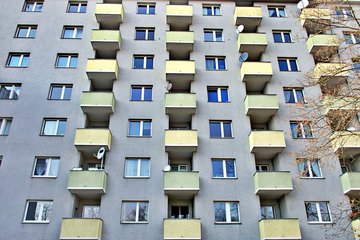Danger from the well
Shambhavi Priyam of the Max Planck Institute for Research on Collective Goods is coordinating an information campaign in northeast India in order to protect people from arsenic-contaminated well water. She reports on culinary delights, the slow wheels of the Indian bureaucracy, and celebrating her birthday in the midst of a pandemic.

For many of us, the word ‘arsenic’ conjures up images of old murder mysteries. But hardly anyone in Germany knows that millions of people in India and Bangladesh suffer from chronic arsenic poisoning – and that tens of thousands of people die from it every year. Highly toxic arsenic compounds occur naturally in the groundwater in some areas of northeast India. Many wells are contaminated with it. The problem ist that you can’t see, taste, or smell the arsenic in the water. And because it doesn’t make you sick right away, many people don’t even realize that they are damaging their health every day. They use the well water for drinking, cooking, and irrigation. In the process, they suffer from chronic poisoning over the years. Typical symptoms are painful, itchy calluses on the palms of the hands and soles of the feet as well as dark spots on the skin. It sometimes takes years – or even decades – for nervous diseases or cancer to develop.
We want to figure out the best way to make people aware of the invisible danger and persuade them to change their habits. The study involves 150 villages from the Bihar region in northeastern India. The people here either farm or earn their living as migrant workers. Many cannot read or write and have limited access to medical care. In order to educate them about the arsenic problem, we have made a film in cooperation with the local government. Film work was completely new territory for me. But it was a lot of fun.
The footage provides information about the invisible danger and shows the inhabitants of the region how to obtain safe water. One method is to boil water collected from ponds and rivers. But there is an even easier way: well water is left to stand overnight so that the arsenic can settle to the bottom. The water at the top of the vessel can safely be used. A small change in behavior can thus have a huge effect – I want to spread this message to as many people as possible! To do this, I work together with local helpers. They go to the villages, measure the arsenic levels in the wells, interview people about their habits and health status, and show them the film. In order to reach people, it is important that all contributors speak the local language and know the local conditions. I was born in Patna, the capital of Bihar, and spent the first 10 years of my life here.
An interim assessment of a subsample of our households has shown encouraging effects with respect to improvement of water quality. In the longer run, however, we want to elicit answers to questions such as: do they remember the content of the film and behave differently now? Do they share the information with others? How are they doing healthwise? The campaign got off to a promising start, and people are open to the topic. However, because of the coronavirus pandemic, the project has been considerably delayed.
I currently spend most of my time in a small apartment in Patna working on my computer. I would like to meet with my relatives, many of whom live around here. But unfortunately, that’s not possible at the moment. I recently celebrated my birthday in a quiet manner in line with COVID-19 regulations. My cousins surprised me with a homemade cake. And later, there was a party with friends – via video chat. It is great to have a support system in India during the COVID-19 catastrophe which can make it difficult to work alone in the field. When I am in India, I especially enjoy the delicious food with all its wonderful spices. German cuisine doesn’t quite have enough spice for my taste. So I often have to give it a bit of help. But every now and then, I enjoy eating plain cheese spaetzle. What I like about India is how easy it is to strike up a conversation with people on the street and find out something new. But sometimes I miss Germany – especially when I have to deal with the authorities. The wheels of Indian bureaucracy move incredibly slowly. What I like about the Germans is that they are straightforward and say what they think. This is different in India. Here, you rarely hear a clear “yes” or “no”.
I love to travel and have lived in the U.S. and France for a while. But I feel at home where I am at the moment. I would like to continue to work in Germany as a scientist because it is the ideal research environment for me.












